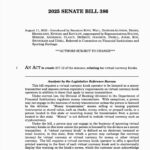Bitcoin’s September Struggles
Bitcoin’s (BTC) downturn as September begins serves as a disconcerting reminder for traders that historical patterns are not favorable.
The largest cryptocurrency by market cap has experienced a decline in nine of the last 14 Septembers, with an average monthly loss of approximately 12%.
This seasonal trend is once again prominent in 2025. Bitcoin started the week close to $110,000, its lowest point in nearly two months, while the total crypto market capitalization has dropped to $3.74 trillion, hitting a three-week low.
BTC prices have remained stable over the past 24 hours, with Solana’s SOL (SOL) leading gains at 4%, followed by XRP at 1%, and Cardano’s ADA (ADA) increasing by 1.5%.
Traders indicate that the combination of macroeconomic uncertainty, fragile sentiment, and weakening volumes allows little leeway heading into what has conventionally been the hardest month of the year.
The technical indicators are not offering much reassurance either. Alex Kuptsikevich, chief market analyst at FxPro, remarked that the broader capitalization chart “continues to record a series of lower lows, signaling a downward trend.”
He highlighted Bitcoin’s inability to maintain the $112,000 level and cautioned of “further decline toward the $105,000 area,” a significant support level before the psychological threshold of $100,000.
The crypto fear index has regressed towards 40, its lowest since April, indicating that anxiety is building before it fully breaks.
In 2017, Bitcoin experienced a nearly 8% drop in September, even with the euphoric rally that would elevate it to $20,000 later that same year. In 2019, the token suffered an almost 14% loss in September, presaging months of sideways movement.
Even in the most recent cycles, September 2021 and 2022 both displayed significant declines, serving as a reminder that liquidity dry-ups and macro hesitations frequently coincide with the summer’s conclusion.
This year, these challenges are evident in ETF flows. Following consistent accumulation through most of August, U.S. spot Bitcoin ETFs experienced net outflows of $440 million last week.
Ether ETFs, which were launched just last year, recorded inflows exceeding $1 billion, representing a rare positive note but also indicating that capital might be rotating rather than increasing overall.
Meanwhile, CryptoQuant data reveals that spot ETFs have now absorbed over 1.3 million BTC, nearly 6% of the total supply, positioning them on par with the largest exchanges for market share.
The danger lies in the potential for support levels to break before any macro relief materializes. Upcoming non-farm payroll data due on Friday is anticipated to reflect just 45,000 new jobs, confirming a deceleration in the U.S. labor market.
A weak reading could bolster the argument for a rate cut from the Fed in September, a catalyst that might shift sentiment back to risk-on. Until that occurs, traders are investing in downside hedges.
Options data illustrates the strongest demand for puts in weeks, with the skew firmly leaning bearish, as noted by FxPro’s Kuptsikevich, who advises caution among intra-day traders.



















